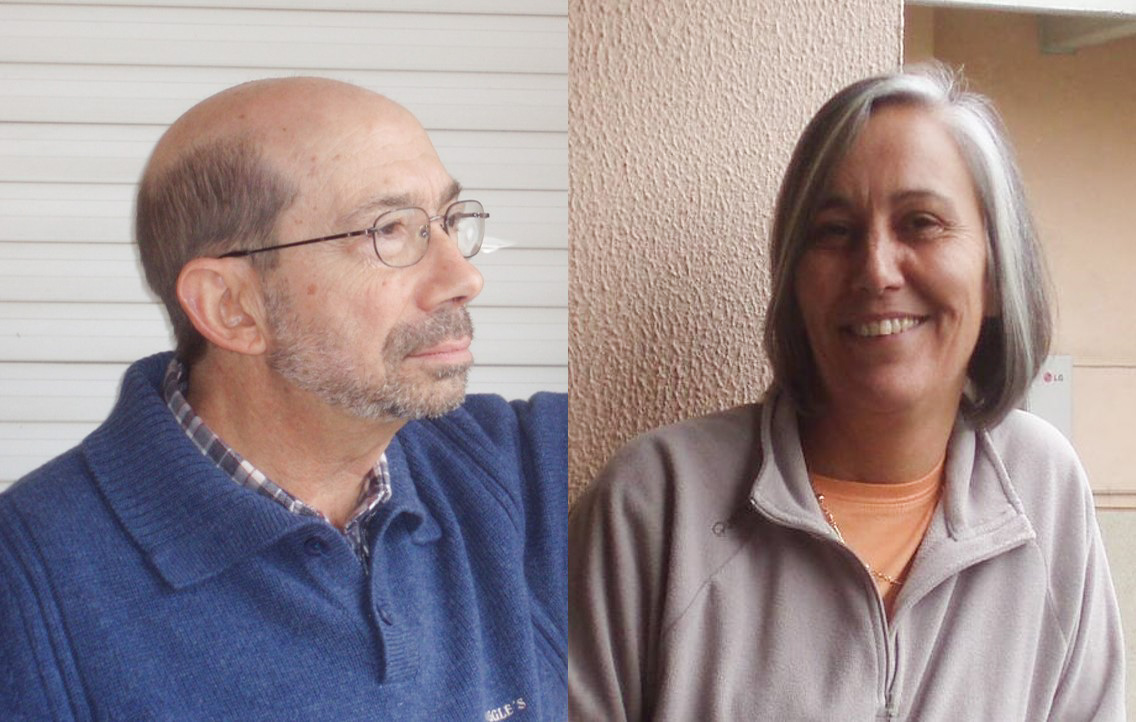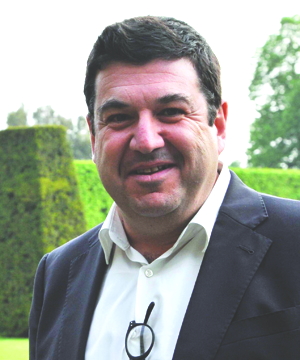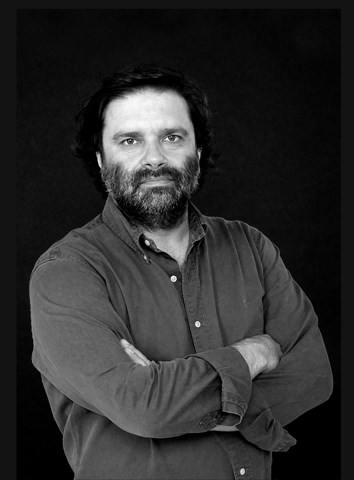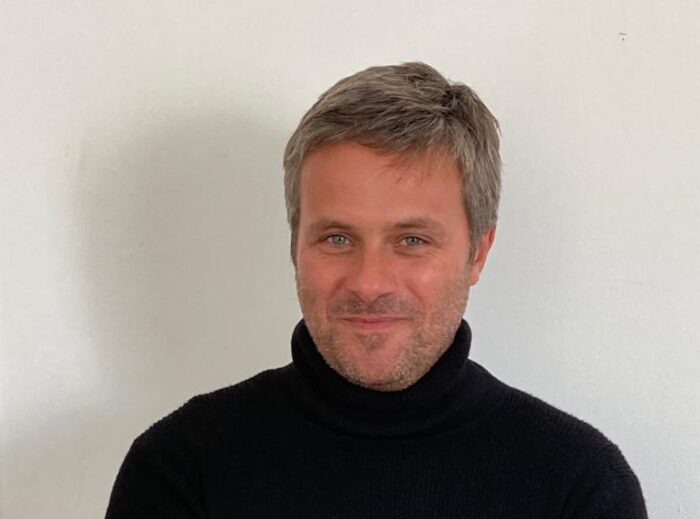A conversation with Arch. Maria João Carvalhão Duarte and Arch. Alfredo Saldanha

A conversation with Arch. Maria João Carvalhão Duarte and Arch. Alfredo Saldanha
’We do everything: the bureaucratic part, mail, copies, run errands, decipher incompatible legislation. We aren't always fulfilling top functions!’
What did you want to be when you grew up?
MJ – I did the Biology section in high school and didn’t follow it because of Chemistry, I hated it. Then I did civic service, gave support to children, I even feel sorry for not having followed that course as well. Meanwhile, the School of Architecture (ESBAL) reopened – which had closed by the time of the 25 de Abril – with a group of teachers who volunteered to open it with the year zero, because many students had not finished their courses when the school closed. I signed up. This year’s work was at Casal Ventoso and, from then on, I was sure that was what I wanted. During the course, as we were after 25 de Abril, the atmosphere was very politicized (my School was, at the time, mostly MRPP) and fun!
AS – My first option was always drawing. At school, I was often not attentive, I made cartoons in my notebooks, sometimes I was punished, other times the teachers promoted the drawings. In high school, the drawing teacher suggested that this could be my orientation and I went to architecture. My course was, in the morning, at the Faculty of Sciences and, in the afternoon, at the Fine Arts, because it was in common with engineers. At the time, architecture was almost an unusual thing, given the small number of architects.
How did this partnership start?
MJ – I worked, during the course, at the suggestion of Eng. José Mendonça, who I know since I was born and was always my “job seeker”, in Coplano, a cooperative formed with some architects who had left Conceição Silva’s studio. I did the planning. That’s when I came across the architect Saldanha, who was a partner at Coplano. When I left, I went to the architect Palma de Melo’s studio, who was an exceptional person. A fantastic environment. But at one point the studio went into decline.
AS – During the course, I started to realize that it was necessary to do something to gain experience and, supported by the architect Carmo Valente, I joined architect Conceição Silva’s atelier, which was the largest studio in the Iberian Peninsula. It was great. I started by working with engineers, that’s when I met eng. Rocha Cabral, later I collaborated in an urban survey to the municipality of Loures for the thesis of architect. Tomás Taveira. When he left, I assisted some of his works, which gave me construction site experience. In 1977, I left the CS studio and founded, with other colleagues of that studio, “Coplano”. When in 1982 I chose to work as an independent, some clients who knew me at Coplano remained, new ones appeared and Maria João started to collaborate with me.
What are the main differences between these large ateliers and your current one?
MJ – Here, as we are only two, we do everything from job raising to finishing. We do strictly everything, including the bureaucratic part, going to the post office, descriptive memories, making copies, running errands. We are not always fulfilling “top functions”. And we still have to decipher incompatible legislation, which is horrible! It has advantages and disadvantages. The main advantage is knowing how to do things from beginning to end, which does not happen when working in a stratified place. Another is that we can be given any project, from planning, decoration, architecture, urban planning… The disadvantage is that we have difficulty accessing new technologies and programs, because they are very expensive…
AS -…and we cannot embrace big projects. I once entered a tender for a buildable front, in Parque Urbano of Oporto, where I was killing myself. I pulled several “all-nighter” and swore I would not get involved in another one. I went from Lisbon to Oporto, almost inanimate, to bring the huge panels to the exhibition. At the time, everything failed, even the copy shop ran out of ammonia, things were badly glued, wizened, they didn’t fit in the car… It was a despair.
MJ – The proposals require a lot of work and investment. We can only participate if we have money and, for that, we need to stop taking orders, which, for a small structure, is complicated because we stop billing. It is necessary to go, but we are afraid to spend the funds that will make us survive for a few more months.
What advice would you give to a young architect intern today?
MJ – That has to be good and different. A young architect who has mastered computer science related to architecture, for example, i think has a future. I was serving as a “test subject” in an architecture course, at Instituto Superior Técnico, given by a computer engineer who asked me, as an architect, to tell him how I saw it. I was very critical because computerists don’t think like architects, they give “written” orders for the drawing to come out and we… draw! So an architect who now has a good command of computer programs is capable of having work. I often ask myself, at this time when we are starting not to have commissions, what do I know how to do? What can I provide that is different? They can…
You have been working with BETAR for several years. How is it to work with us?
AS – We have known BETAR since its foundation. I have passed through several generations of engineers, since eng. José Mendonça and Rocha Cabral and it was very positive. I like to establish a dialogue with engineers, to avoid mistakes, and with BETAR this happens naturally. If it is necessary to go to the work site, they go. Others say to give them the file and then put the structure there, that is nothing. That’s why we suggest them to customers, whenever possible, telling them that they deserve all our trust!
MJ – I think that BETAR engineers, both those we have already talked about, and the current ones, like José Pedro, Maria do Carmo, Leonor, know how to reason as architects, there is no need to explain anything to them, so it is easy to work with them. For example, a beam in the middle of a room is very annoying and, with them, we know that it doesn’t happen. They have that sensitivity. It is very different to work with them or with other engineers, even the quality itself has nothing to do.
AS – José Pedro even draws like an architect, he draws very well, he could be an architect, in fact I think he would like to be! here lies the teaser…
This interview is part of Revista Artes & Letras # 37, December 2012
Partially automatic translation from portuguese: some expressions may differ from their actual meaning.
News & Interviews
A conversation with Arch. Bak Gordon
'Architecture needs time. We are transforming a place and it seems that people don't understand that it takes time to think, otherwise the places will be out of character. Architecture requires serenity, it cannot be euphoric.’ Read more
A conversation with Arch. João Luís Ferreira
‘Architecture is the victory of space over time. (...) It is the opposite of fashion. (...) It is what is not a passenger. (...) Architecture is the mirror of society’. Read more
A conversation with Arch. Steven Evans
'With all the people I've worked with, there's always been one thing in common: how easy it is to laugh. The affinities are workable, but without laughing, it is difficult to be an architect.' Read more




